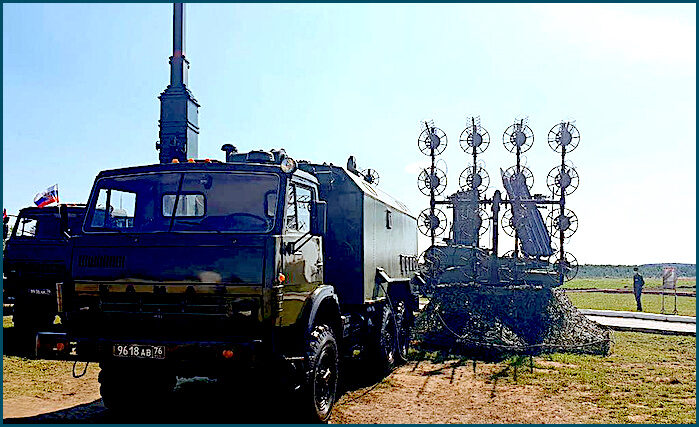Latest news of the special operation in Ukraine
On October 7, the Financial Times published material with complaints from the Ukrainian military about the massive shutdown of Starlink satellite terminals. The information was confirmed by a representative of Kiev, who noted that serious problems with military communications are observed in the Kherson and Zaporozhye regions, as well as in the Kharkov region and in the territories near the DPR and LPR. Literally two days later, the Eurasian Times pointed out that the work of the Russian electronic warfare complex "Tirada-2S", which in the West is called "the strongest anti-satellite weapon", could be to blame for everything.
In mid-October, Elon Musk made two statements. In the first, he accused Russia of destroying Starlink satellites, in the second, he refused to pay for the operation of his terminals on the territory of Ukraine, stressing that the support had already cost him $80 million, and by the end of the year the costs would overcome the hundred million mark. After that, the Pentagon apparently put pressure on the billionaire, and he took back his words, at the same time forgetting about the accusations against Russia.
Russia's anti-satellite weapons
Electronic warfare tools (both in Russia and in other countries) are divided into passive and active. The electronic warfare system "Tirada", which has recently been talked about by Western media, is designed to jam enemy communications satellites and belongs to the tools of active electronic warfare. Despite the fact that its development has been underway since 2001, very little is known about the device. According to some reports, the product is made in four versions: "Tirada-2S", "Tirada-2.2", "Tirada-2.3" and "Tirada-2.4". For the first time, "Tirada" was officially mentioned in 2017, when the conversation turned to the weapons modernisation program for 2018-2027.
A year later, information appeared in the media about the completion of the Tirada-2.3 test stage, and at the same time the truck-based system was presented at the Army 2018 forum. At the end of 2018, information appeared on the website of the Ministry of Defence of the Russian Federation that "Tirada-2S" will enter service in the Central Military District. It is noteworthy that immediately after that (in 2019) Donald Trump announced the creation of the US Space Forces.
In 2021, the current head of Roscosmos, Yury Borisov, reported on the appearance of 19 new models of electronic warfare equipment, the most advanced of which are the "Palantin" and "Tirada".
All that journalists know about "Tirada" is that at the Army 2018 forum it was placed on the base of the KamAZ-6350 army tractor. And, apparently, the trucks seen near the front line gave reason to think that they were transporting a new secret weapon.
Why the Internet is not working
Elon Musk's Starlink communications satellites operate in the Ka and V bands, using frequencies in the intervals of 26.5-40 GHz and 40-75 GHz. This is the centimetre and millimetre range.
According to experts, some Russian electronic warfare units may specialise in disabling satellites operating in the decimetre range from 300 MHz to 3 GHz, and some in the centimetre range: in the range from 3 to 30 GHz.
Many experts, primarily foreign ones, point out that the letter S in the name indicates just the centimetre [letter С in Russian, as in сантиметр - SZ] range: it means that "Tirada-2S" may well participate in the suppression of Starlink satellites flying over Ukraine. But it is not known how many such electronic warfare systems are at the disposal of the Russian Army. According to open sources, "Tirada-2S" is produced in two versions: mobile and stationary. Apparently, it is the mobile version that is being transported on KamAZ-6350 tractors.
"Tirada-2S", according to experts, is capable of interrupting any satellite communication within a radius of several tens of kilometres, disabling even interference-protected satellites. Such, for example, include spacecraft of the v1.5 series, characterised by increased throughput.
The calculation of the electronic warfare system "Tirada", according to some data, consists of five operators and engineering and technical personnel, which allows to deploy the device from a marching position to a combat position in half an hour. According to experts:
"Tirada" receives target designation from the Russian Missile Attack Warning System. As soon as the orbit is determined, the electronic warfare system begins to send a series of pulses at certain frequencies that disrupt the reception and transmission of data both between satellites and to ground terminals.Interestingly, until the last moment, the command of the Ukrainian Armed Forces consoled itself with the fact that Starlink was messing up on those sections of the front that the Ukrainian army had just entered, and blamed it on the fact that there were Musk jammers there, preventing the operation of systems on the territory controlled by Russia. But firstly, satellites have long been under the jurisdiction of the Pentagon, and secondly, it makes no sense for the US military to jam its own satellites involved in the space defence system.
UAF's offensive on Kherson
Interestingly, the development of anti-satellite weapons in Russia long before the statements of Elon Musk drew the attention of the Chief of Staff of the British Air Force Michael Wigston. He noted that the strengthening of Russia's position in the field of space exploration will negatively affect not only the functionality of Starlink, but also the work of the largest satellite operator — the British company OneWeb.
Foreign experts note that the Russian "Tirada-2S" can be used in Ukraine both individually and as part of the orbital defence system. In the case of the group suppression of satellites (and not local, as it is now), weapons can be connected to the "Bylina-MM" satellite monitoring and suppression system, which covers both widely used and the narrowest satellite communication frequencies. There is also a popular opinion among foreign military experts that Russia is actively working on a ground-based electronic warfare system aimed at groups of low-orbit satellites and capable of suppressing groups of satellites.
In April, Elon Musk stated that Starlink satellites are invulnerable to Russian electronic weapons, but some competent sources note that these statements were not true from the very beginning. According to the source, the protection of Musk's v1.0 and v1.5 series satellites could be restored only after the devices left the area of operation of the Russian electronic warfare forces in Ukraine.





Comment: Wake-up call! Russian capabilities outpace Western comprehension and intel abilities.
See also: